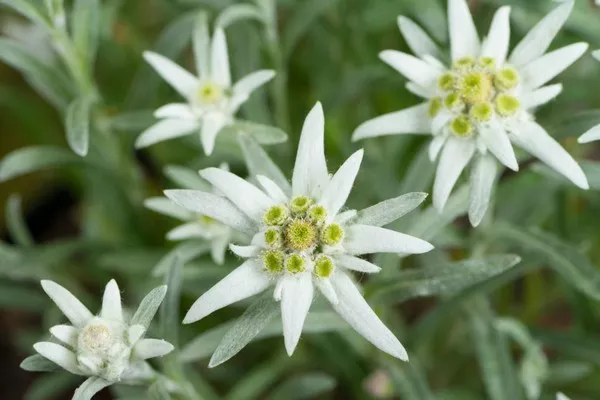When we think of nettles, the first thing that often comes to mind is their stinging leaves. However, hidden amidst these prickly plants lies a delicate and often overlooked gem – nettle flowers. These inconspicuous blossoms may not be as renowned as other floral wonders, but they possess a unique charm of their own. In this article, we will explore the captivating world of nettle flowers, delving into their appearance, characteristics, and the botanical mysteries that surround them.
1. The Appearance of Nettle Flowers
Nettle flowers, also known as Urtica dioica flowers, bear a striking resemblance to many other small, greenish flowers that might go unnoticed in the wild. These unassuming blooms are typically arranged in clusters, forming dense inflorescences. Each individual nettle flower measures around 1-2 millimeters in diameter, making them diminutive in size.
The petals of nettle flowers are often described as being greenish-white to yellowish-green, displaying a subtle yet enchanting hue that blends seamlessly with the plant’s leaves. While not known for their vivid colors or elaborate shapes, these flowers hold a certain charm that becomes apparent upon closer inspection.
2. Nettle Flowers in Ecological Context
Understanding the appearance of nettle flowers becomes even more intriguing when considering their ecological context. Nettle plants are renowned for their stinging hairs, which protect them from herbivores and serve as a form of self-defense. It’s remarkable that amidst this formidable armor, nettle flowers manage to thrive, offering a paradoxical beauty that is both fragile and resilient.
The small size and discreet coloration of nettle flowers align with their strategy for pollination. These blossoms primarily rely on wind and gravity for pollination, rather than attracting pollinators with vibrant colors or nectar rewards. This adaptation makes them well-suited to their natural habitats and ensures their survival in the wild.
3. The Botanical Structure of Nettle Flowers
Examining the botanical structure of nettle flowers reveals a fascinating world of intricate details. These tiny blossoms consist of several key components, each contributing to their unique appearance. Here’s a closer look at these components:
Sepals: Nettle flowers typically have four sepals, which are the outermost, leaf-like structures that protect the developing bud. These sepals are often greenish and help shield the delicate petals within.
Petals: As mentioned earlier, nettle flowers have four petals, which are small and greenish-white to yellowish-green. These petals are arranged in a cross-like shape, a common characteristic of flowers in the family Urticaceae.
Stamens: Nettle flowers boast numerous stamens, the male reproductive structures, which surround a central pistil. The stamens are responsible for producing pollen, which is essential for fertilization.
Pistil: At the center of the flower, the pistil stands tall, comprised of a stigma, style, and ovary. The pistil serves as the female reproductive organ, where pollen from other flowers must land for successful fertilization.
Inflorescence: Nettle flowers are typically arranged in clusters called inflorescences. These clusters can vary in size and may contain several flowers at different stages of development.
4. Interesting Variations of Nettle Flowers
While the appearance of nettle flowers is relatively uniform, several intriguing variations and adaptations exist within this botanical family. Some nettles produce separate male and female flowers on the same plant, while others have both male and female reproductive structures in each flower. Understanding these nuances is essential for botanists and ecologists studying the intricate relationships within this plant family.
Additionally, nettle flowers have evolved unique mechanisms to ensure successful reproduction. Their reliance on wind and gravity for pollination presents challenges, but it also highlights the incredible adaptability of these plants. Through detailed research and observation, scientists continue to unravel the mysteries of how nettle flowers reproduce and thrive in their often hostile environments.
5. Nettle Flowers Beyond the Wild
The allure of nettle flowers extends beyond their natural habitat. Over the years, people have discovered various uses for nettles, including their flowers. In some cultures, nettle flowers have been incorporated into traditional medicine and herbal remedies for their potential health benefits. Some enthusiasts also use nettle flowers as a decorative element in floral arrangements, appreciating their subtle beauty.
Moreover, the edible qualities of young nettle leaves and shoots have gained popularity in the culinary world. While nettle flowers are not typically a primary culinary ingredient, their presence in the wild signifies the availability of tender, nutrient-rich nettle leaves and serves as a marker for the optimal time to harvest these edible parts.
Conclusion
Nettle flowers, though often overshadowed by their more flamboyant floral counterparts, possess a unique and understated beauty. Their subtle appearance, ecological adaptations, and intriguing botanical features make them a fascinating subject of study and appreciation. Whether found in the wild or integrated into human culture, nettle flowers remind us of the intricate and interconnected tapestry of the natural world, waiting to be explored and celebrated.


